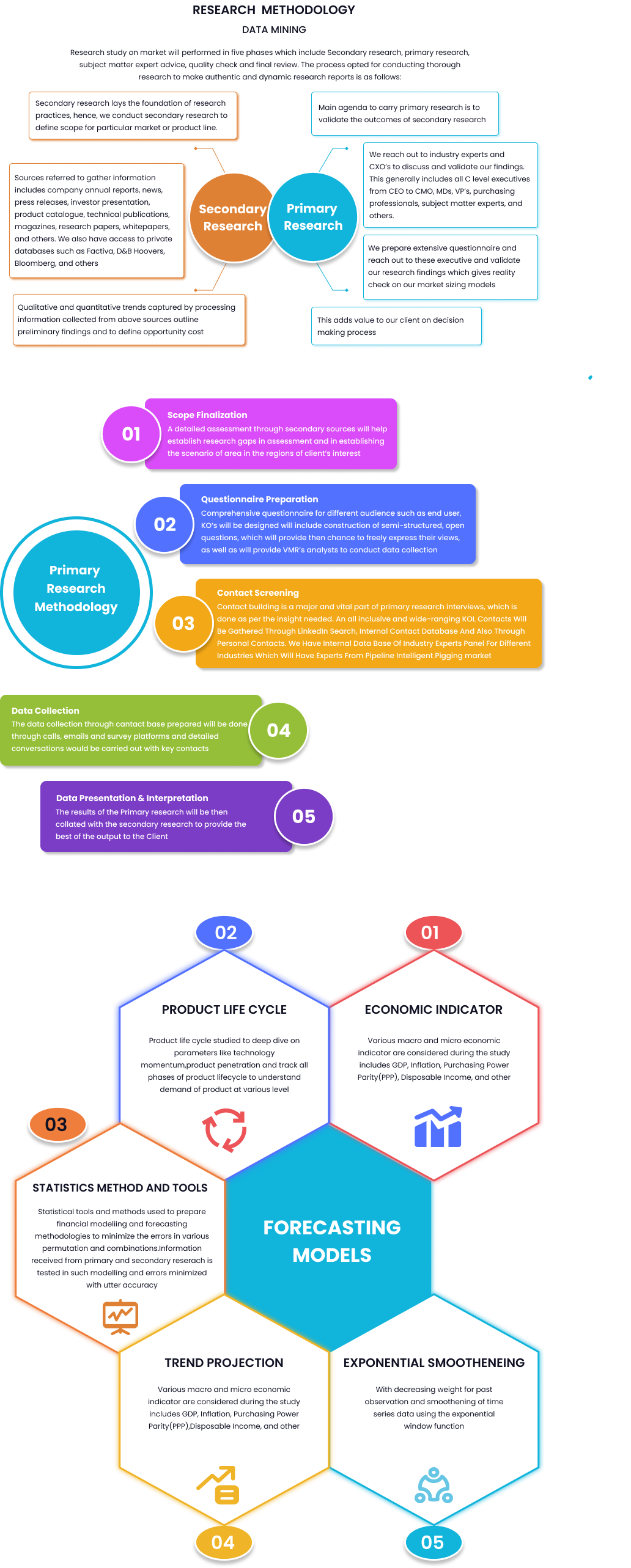
Global Smart Motors Market By Type (24V, 18V, 36V), By Application (Industrial, Automotive, Consumer Electronics), By Region, And Segment Forecasts, 2023 to 2032
Report Id: 44241 | Published Date: Jul 2024 | No. of Pages: 10 | Base Year for Estimate: Jul 2024 | Format:
The global rise in passenger and commercial vehicle sales has significantly boosted demand for smart motors in the automotive sector. Used in applications like window and electric seat systems, these compact, flexible motors offer precise control tailored to vehicle needs. This adaptability attracts manufacturers, facilitating easy integration into various automotive functions.
The global smart motors market is valued at USD 2.02 billion in 2024 and is projected to reach USD 2.74 billion by 2029, growing at a CAGR of 5.91% from 2024-2029. Smart motors, offering enhanced vehicle performance and functionality, are increasingly by manufacturers to meet automotive market demands. Their compact design and superior control capabilities have led to wider adoption in industries like wire, fabric and paper for winding and spooling applications.
Global Smart Motors Market:
Drivers: Electric vehicle revolution, focus on connected vehicles, advancements in technology and strict government regulations.
-The surging popularity of electric vehicles necessitates smart motors that optimize energy efficiency, improve driving range, and enhance overall EV performance. This is a key driver for the smart motors market.
-The rise of connected vehicles and autonomous driving technologies requires motors with advanced communication capabilities for real-time data exchange and precise control within automated systems.
-Smart motors can be tailored to specific vehicle applications, optimizing torque, power output, and overall performance while maintaining energy efficiency.
-Stricter government regulations and emission reduction targets are driving the demand for cleaner and more efficient transportation solutions, propelling the adoption of smart motors in electric and hybrid vehicles.
Restraints: Higher Costs, Limited infrastructure & charging challenges and lack of standardization.
-Smart motors with advanced features can be more expensive than traditional motors due to complex design elements and sophisticated control systems. This can be a barrier for cost-sensitive manufacturers.
-The widespread adoption of electric vehicles, which rely on smart motors, is hindered by the lack of sufficient charging infrastructure in many regions.
-The lack of complete standardization across different smart motor technologies can limit compatibility and potentially lead to vendor lock-in for car manufacturers.
Opportunities: Focus on cost reduction, emphasis on standardizations and advancements in material science.
-As production volumes increase and manufacturing processes become more efficient, the cost of smart motors is expected to decrease, making them more accessible to a wider range of vehicle manufacturers.
-Collaborative efforts towards establishing industry-wide standards for smart motors can promote interoperability, encourage competition, and benefit the overall market.
-Developments in material science can lead to lighter and more efficient smart motors, contributing to improved vehicle range and overall performance.
Market By Smart Motors Type Insights:
Based on component type, the market is segmented into Variable Speed Drive, Intelligent Motor Control Center and Motor. Electric motors occupy a major portion of the market due to their core role in converting electrical energy to mechanical motion. Additionally, their integration with various control systems and sensors provided flexibility for diverse applications.
Based on product type, the market is segmented into 24V, 18V, 36V and 48.24V. 48V smart motors are expected to grow in 2024, especially in the automotive industry. The demand is driven by the rise in electric and hybrid vehicles requiring higher voltage for better power and torque. These motors also offer greater efficiency than traditional 12V systems, and stringent emission regulations are pushing manufacturers towards electrification.
Market By End-Use Insights:
Based on end-use, Industrial automation is poised to lead the market owing to factors like precision and efficiency requirements in industrial applications, robotics and machine tools getting integrated with smart motors and increasing investments in smart motor technologies that reflect global automation trends.
Market By Region Insights:
Based on regional coverage, the market is segmented into North America, Europe, Latin America, Asia-Pacific, Middle East and Africa. Asia-Pacific stands out as a crucial market for this industry, offering substantial growth opportunities due to increasing automation adoption across various sectors. Energy efficiency concerns are driving demand for compact, energy-efficient electrical equipment and smart motors in the region.
Competitive Scenario:
Key players in the region include ABB Ltd, Schneider Electric SE, Dunkermotoren GmbH (AMETEK Inc.), Fuji Electric Co. Ltd. (Furukawa Co. Ltd.), General Electric Company, RobotShop Inc.,Moog Inc., Nidec Corporation, Rockwell Automation Inc., Siemens AG and Technosoft SA.
Scope of Work-Global Smart Motors Market
Key Market Developments:
July 2023-Nidec Corporation has announced the acquisition of TAR, LLC d/b/a Houma Armature Works, a privately owned US company ("Houma"), from its founding family via its subsidiary, Nidec Motor Corporation. Nidec Motor Corporation can use this acquisition to improve its service offering and increase its share of the US installed base. Houma will be able to offer services to NMC customers.
August 2023-Torqeedo, a market leader in electric boating, has partnered with c.technology, a cutting-edge SaaS cloud infrastructure provider for power sport vehicles. This collaboration aims to create intelligent motors and an innovative software system.
June 2023-Moog Animatics announced that Weinstadt, Germany-based Kelch has replaced the stepper motors in its product with Moog Animatics SmartMotor (model SM23165DT) to improve efficiency, save space, and protect workers' hearing.
Frequently Asked Questions (FAQs)
What is the size of the global smart motors market?
Ans. As of 2024, the global smart motors market is valued at USD 2.02 billion.
What are the key drivers of the smart motors market?
Ans. Key drivers include the electric vehicle revolution, focus on connected vehicles, advancements in technology and strict government regulations.
What are the major challenges in the smart motors market?
Ans. Challenges include higher Costs, Limited infrastructure & charging challenges and lack of standardization.
What are the growth opportunities in the smart motors market?
Ans. Opportunities include Focus on cost reduction, emphasis on standardizations and advancements in material science.

Speak with an analyst to get exclusive insights tailored to your needs

